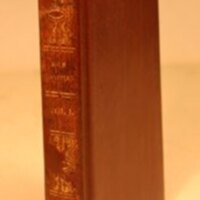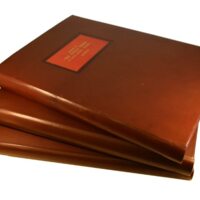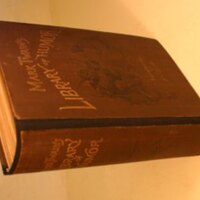Preservation Week 2021 and the Adopt-A-Book Program
Adopt-A-Book: The 1800s
"By 1800, Britain had a print-dependent economy and culture, an increasingly literate and rapidly growing population, and an efficient book trade in which specialization in the various activities that constitute the trade was creating new businesses and laying the foundations for success and prosperity. The market and the means of reaching it developed in parallel, each feeding off the other. New genres and formats were developed to meet market demand. New methods of trading were devised. New distribution systems evolved" (Banham, 2008, p. 245).
Firstly, new methods of papermaking came on the scene. These new methods "were able to produce more paper in a day than a single vat for hand production could make in a week" (Banham, 2008, p. 274). Paper itself changed, as it was made with rags until a shortage. In 1854, alternate materials were introduced, such as esparto grass from Spain and North Africa, and wood pulp (Banham, 2008, p. 274). Printing presses became mechanized (Banham, 2008, p. 276), as did bookbinding (Banham, 2008, p. 280). Typefaces also became widely used, most of them based on the old ones; however, there were new ones as well, such as Times New Roman (Banham, 2008, p. 283). Colors and photographs also made their way into books (Banham, 2008, pp. 286-288).
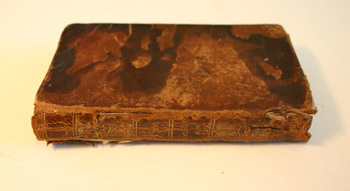
University of Missouri Special Collections call number: PR5189.P4 D6 1835
Donors: John John and Karen John
Source: https://library.missouri.edu/giving/adoptabook/
Don Sebastian, or the House of Braganza by Anna Marie Porter.
This book was published in 1835 and is a fictional romance set in 16th-century Europe. The book had water damage and its front cover was detached. [1]
Anna Marie Porter was a prolific writer born in 1780 who began writing at the age of 13. Though she was prolific, her writing left no lasting impact on society. Now, she is remembered only as a classic female writer, and it was her sister, Jane Porter, who gained the notoriety as an author. [2]
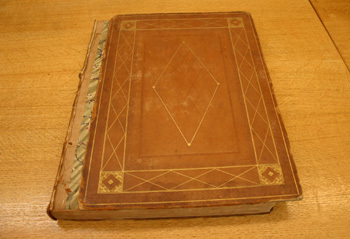
University of Missouri Special Collections call number: E89 .M35 1837
Donor: Kenneth R. Mares
Source: https://library.missouri.edu/giving/adoptabook/
History of the Indian Tribes of North America by Thomas Lorraine McKenney.
This book, published in 1837, is a collection of 125 images of plates, and the author's goal was to publish a comprehensive record of the histories and ways of life of peoples that were quickly fading away. [1]
The book was recased, the boards were replaced, and the spine of the book was re-lettered and replaced. The goal was to keep the book as close to the original as possible.
Boards: The core of the protective covers on a codex book, i.e., the part of the covers that makes a book “hardcover.” [2]
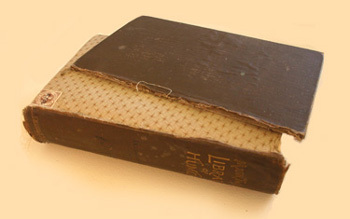
University of Missouri Special Collections call number: PN6157 .C5 1888
Donor: Margo Lynn Hablutzel
Source: https://library.missouri.edu/giving/adoptabook/
Library of Humor, by Mark Twain.
This book was published in 1888. It contains humorous works from famed authors including Harriet Beecher Stowe, Ambrose Bierce, Uncle Remus, Artemus Ward, Dr. Oliver Wendell Holmes, Eugene Field, and Washington Irving. Twain contributed several stories, including "The Jumping Frog," "Nevada Nebobs in New York," and "Dick Baker's Cat." According to Twain, "Truth is stranger than fiction, but it is because Fiction is obliged to stick to possibilities; Truth isn't." [1]
This first edition needed the back and front covers reattached and had some loose quires.
Quire: One-twentieth of a ream of paper, or 25 sheets (though the exact number of sheets in a quire may vary by the place and time of manufacture). [2]
Sources:
Banham, R. (2008). The Industrialization of the Book: 1800-1970. In Rose, J., Eliot, S. & Banham, R. (Eds.), The History of the Book (1st ed., pp. 273-290). John Wiley & Sons, Ltd.

